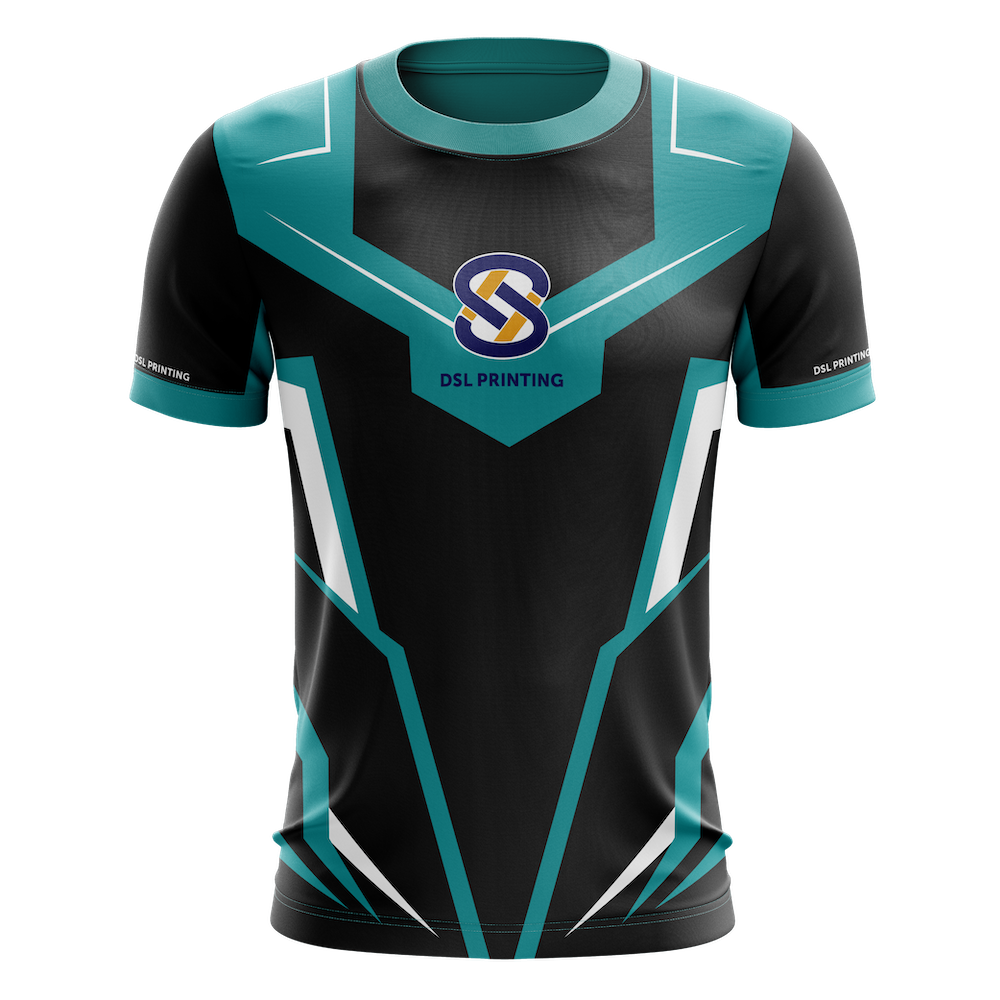Sublimation printing has become increasingly popular in recent years due to its ability to produce vibrant and long-lasting designs on various materials. However, when it comes to sublimating on jersey material, many people wonder if it is possible to achieve the same high-quality results. In this article, we will explore the process of sublimation printing, the compatibility of jersey material with sublimation, and provide valuable insights regarding the best practices for sublimating on jersey fabric.
Understanding Sublimation Printing
Before we delve into the specifics of sublimating on jersey material, let’s first understand what sublimation printing entails. Sublimation printing is a digital printing method that uses heat to transfer dye onto a material, such as fabric or ceramics. Unlike traditional printing methods, sublimation printing allows the dye to penetrate the material’s fibers, resulting in vibrant, durable, and fade-resistant designs.
The sublimation process involves three main components: sublimation ink, sublimation paper, and a heat press. First, the desired design is printed onto sublimation paper using specialized sublimation ink. Then, the paper with the design is placed on top of the material and subjected to high temperatures using a heat press. The heat causes the ink to vaporize and bond with the fibers of the material, resulting in a permanent and vibrant design.
The Compatibility of Jersey Material with Sublimation
Jersey material is a popular choice for various applications, including athletic uniforms, t-shirts, and other apparel. It is a versatile fabric known for its stretchiness, breathability, and comfort. However, when it comes to sublimation printing, the compatibility of jersey material can vary depending on its composition.
Most jerseys are made from a blend of polyester and spandex or polyester and cotton. Polyester is a synthetic fiber that is highly receptive to sublimation, making it an ideal choice for sublimation printing. The dye from sublimation ink easily bonds with the polyester fibers, resulting in vibrant and permanent designs.
On the other hand, cotton and spandex do not have the same affinity for sublimation ink as polyester. Cotton is a natural fiber that does not absorb the sublimation ink in the same way as polyester. As a result, sublimating on 100% cotton jersey material may not yield the same vibrant and long-lasting results as polyester jersey material.
Spandex, also known as elastane or Lycra, is a stretchy synthetic fiber commonly blended with polyester in jersey material. While spandex itself does not have a high affinity for sublimation ink, the polyester component in the blend allows for successful sublimation printing on jersey material containing spandex.
Best Practices for Sublimating on Jersey Material
While sublimation printing on jersey material can yield excellent results, there are certain best practices to follow to ensure optimal outcomes. By adhering to these guidelines, you can achieve vibrant and durable designs on jersey fabric.
1. Choose Polyester-based Jersey
When selecting jersey material for sublimation printing, opt for polyester-based jerseys rather than 100% cotton ones. Polyester jerseys have a higher affinity for sublimation ink, resulting in superior color vibrancy and durability. Look for jerseys made from a blend of polyester and spandex or polyester and cotton for the best sublimation results.
2. Ensure a High Polyester Content
It is important to ensure that the jersey material you choose has a high polyester content. The higher the polyester content, the better the sublimation results. Aim for jerseys with at least 80% polyester composition for optimal color vibrancy and longevity.
3. Use High-Quality Sublimation Ink and Paper
The quality of the sublimation ink and paper used can significantly impact the final result. Invest in high-quality sublimation ink and paper to ensure vibrant and long-lasting designs. Inferior quality ink and paper may result in dull colors or fading over time.
4. Pre-Press the Jersey Material
Before sublimating the design onto the jersey material, it is recommended to pre-press it. Pre-pressing helps remove any moisture or wrinkles from the fabric, allowing for better ink absorption. Use a heat press to apply medium pressure on the jersey material for a few seconds before proceeding with the sublimation process.
5. Test the Design and Color Combination
Prior to sublimating a large batch of jerseys, it is advisable to test the design and color combination on a small piece of jersey material. This allows you to evaluate how the colors appear on the fabric and make any necessary adjustments. Testing helps ensure that the final result meets your expectations.
6. Optimize Heat Press Settings
Heat press settings play a crucial role in achieving optimal sublimation results. Follow the manufacturer’s instructions for the specific sublimation ink and paper being used. Set the appropriate temperature, pressure, and pressing time to ensure proper ink transfer and bonding with the jersey material.
7. Post-Pressing and Curing
After sublimating the design onto the jersey material, it is essential to post-press and cure the fabric. Post-pressing helps remove any excess moisture and enhances the color vibrancy. Curing, which involves subjecting the fabric to high temperatures for a specified duration, ensures the ink fully bonds with the fibers, resulting in long-lasting designs.
Case Study: Sublimation Printing on Jersey Material
A case study conducted by a leading sublimation printing company examined the results of sublimating on different types of jersey material. The company tested sublimation printing on 100% polyester jerseys, polyester-spandex blend jerseys, and polyester-cotton blend jerseys.
The results of the case study showed that sublimation printing on 100% polyester jerseys yielded the most vibrant and durable designs. The colors appeared vivid and did not fade even after multiple washes. The polyester-spandex blend jerseys also produced satisfactory results, although the color vibrancy was slightly lower compared to 100% polyester jerseys. The polyester-cotton blend jerseys, however, showed less vibrant colors and some fading over time.
Based on the case study, it is evident that the composition of the jersey material significantly affects the sublimation results. Polyester-based jerseys, particularly those with a high polyester content, are the most suitable for achieving vibrant and long-lasting designs through sublimation printing.
Frequently Asked Questions (FAQs)
1. Can I sublimate on 100% cotton jerseys?
While it is possible to sublimate on 100% cotton jerseys, the results may not be as vibrant or long-lasting as sublimating on polyester-based jerseys. Cotton does not have the same affinity for sublimation ink, leading to less vibrant colors and potential fading over time.
2. What is the best polyester content for sublimating on jersey material?
Aim for jerseys with at least 80% polyester content for optimal sublimation results. The higher the polyester content, the better the color vibrancy and durability of the design.
3. Can I sublimate on jerseys containing spandex?
Yes, sublimation printing can be done on jerseys containing spandex. The polyester component in the blend allows for successful sublimation results, although the color vibrancy may be slightly lower compared to 100% polyester jerseys.
4. How can I ensure the longevity of sublimated designs on jersey material?
To ensure the longevity of sublimated designs on jersey material, follow best practices such as using high-quality sublimation ink and paper, optimizing heat press settings, and post-pressing and curing the fabric. Proper care and washing instructions should also be provided to customers to maintain the vibrancy of the designs.
5. Can sublimation printing be done on other types of fabric?
Yes, sublimation printing can be done on various types of fabric, including polyester, nylon, and certain blends. However, it is essential to consider the fabric’s compatibility with sublimation ink and follow specific guidelines to achieve optimal results.
Conclusion
Sublimation printing on jersey material is indeed possible, provided the jersey fabric contains a sufficient amount of polyester. Polyester-based jerseys, especially those with a high polyester content, are the most compatible with sublimation ink, resulting in vibrant and long-lasting designs. By following best practices, such as choosing the right jersey material, using high-quality sublimation ink and paper, and optimizing heat press settings, you can achieve impressive sublimation results on jersey fabric. Sublimation printing opens up a world of possibilities for customizing athletic uniforms, t-shirts, and other apparel, allowing for vibrant and durable designs that will truly stand out.
Frequently Asked Questions (FAQs) After The Conclusion
1. Can I sublimate on 100% cotton jerseys?
While it is possible to sublimate on 100% cotton jerseys, the results may not be as vibrant or long-lasting as sublimating on polyester-based jerseys. Cotton does not have the same affinity for sublimation ink, leading toless vibrant colors and potential fading over time. It is recommended to choose polyester-based jerseys for optimal sublimation results.
2. What is the best polyester content for sublimating on jersey material?
Aim for jerseys with at least 80% polyester content for optimal sublimation results. The higher the polyester content, the better the color vibrancy and durability of the design. Jerseys with lower polyester content may still yield satisfactory results, but the colors may not be as vibrant or long-lasting.
3. Can I sublimate on jerseys containing spandex?
Yes, sublimation printing can be done on jerseys containing spandex. The polyester component in the blend allows for successful sublimation results. However, it’s important to note that the color vibrancy may be slightly lower compared to 100% polyester jerseys. Conducting a test print on a small piece of fabric is recommended to ensure the desired results.
4. How can I ensure the longevity of sublimated designs on jersey material?
To ensure the longevity of sublimated designs on jersey material, it is crucial to follow proper care and washing instructions. Avoid using harsh detergents or bleach, and wash the jersey inside out in cold water. Additionally, avoid drying the jersey in direct sunlight or using high heat in the dryer. By taking these precautions, you can help preserve the vibrancy and durability of the sublimated designs.
5. Can sublimation printing be done on other types of fabric?
Yes, sublimation printing can be done on various types of fabric, including polyester, nylon, and certain blends. However, it is important to consider the fabric’s compatibility with sublimation ink and follow specific guidelines to achieve optimal results. Some fabrics may require pre-treatment or have different heat press settings, so it is recommended to consult the manufacturer’s instructions and perform test prints before proceeding with the final project.
Summary
Sublimation printing on jersey material is feasible, especially on polyester-based jerseys. Polyester fibers have a high affinity for sublimation ink, resulting in vibrant and long-lasting designs. When sublimating on jersey material, it is crucial to choose jerseys with a high polyester content, preferably 80% or higher. Polyester-cotton blend jerseys and jerseys containing spandex can also be sublimated, but the results may vary in terms of color vibrancy. Following best practices, such as using high-quality sublimation ink and paper, optimizing heat press settings, and post-pressing and curing the fabric, will help achieve optimal sublimation results. By taking proper care of the sublimated jerseys, including following washing instructions, the longevity of the designs can be ensured. Sublimation printing offers endless possibilities for customizing jerseys and other apparel, allowing for vibrant and durable designs that will make a lasting impression.



